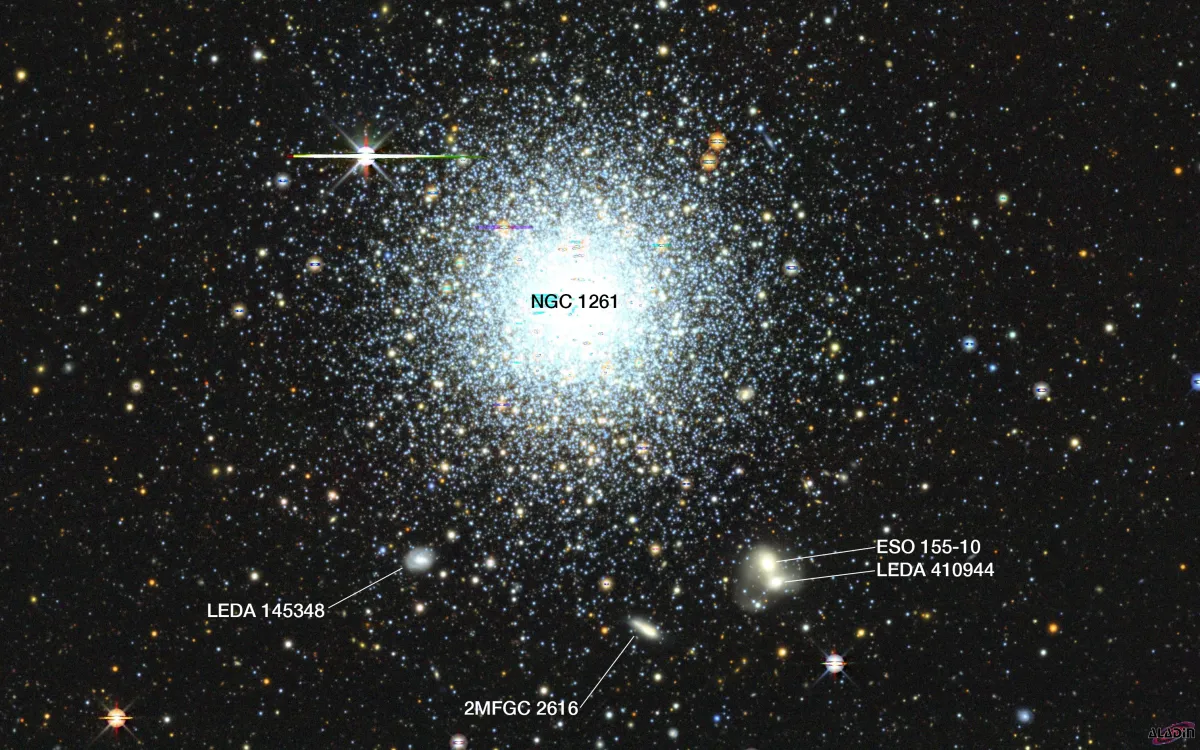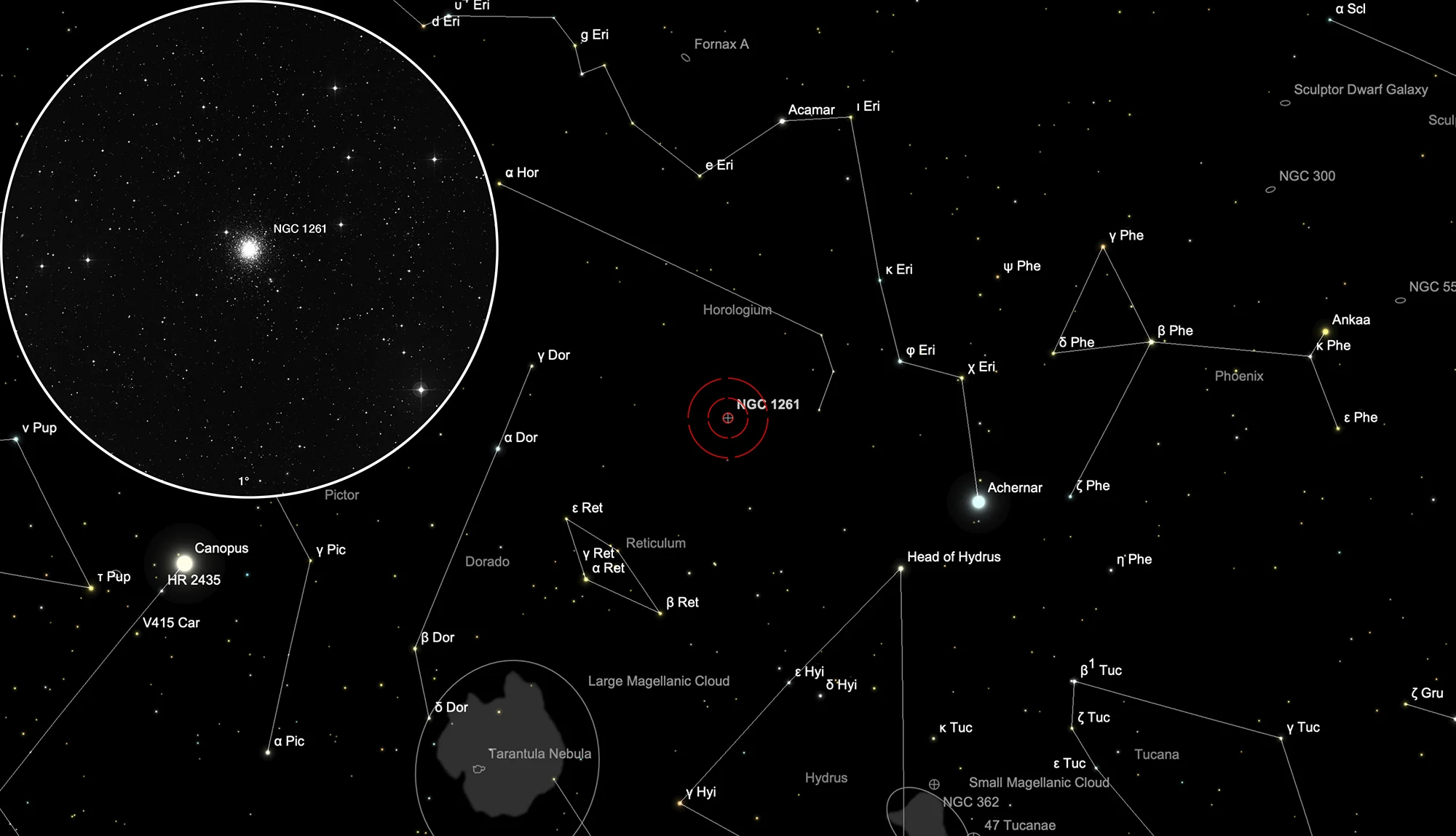Globular Cluster NGC 1261

History
On 28 September 1826 Scottish astronomer James Dunlop discovered this globular cluster with his 9-inch speculum reflector from Parramatta, NSW. He observed it twice, listed it as Δ 337 and described it as follows: «a very bright round nebula, about 1.5' diameter, pretty well defined and gradually bright to the centre. A small star north following.» [50]
John Herschel observed this cluster twice with his 18.3-inch reflector in South Africa. He listed it as h 2517. On sweep 520 from 5 December 1834 he noted: «Globular cluster; bright; large; irregularly round; 2.5' diameter; all resolved into equal stars 14 mag. Has a star 9th mag 45° north following 3' distance.» On sweep 732 from 11 September 1836 he noted: «Pretty bright; round; very gradually brighter in the middle; 3' across; resolved into stars of 15th magnitude. A very faint nebula (??) precedes.» [11] There is a pair of faint galaxies circa 4 arcminutes towards southwest, but it is doubtful that Herschel could see them with his telescope.
Physical Properties
| Name | Type | RA (J2000.0) | Dec (J2000.0) | PM [mas/y] | Parall. [mas] | Rvel [km/s] | z | M Type | Size ['] | Magnitudes | Identifiers |
|---|---|---|---|---|---|---|---|---|---|---|---|
| NGC 1261 | GlC | 03h 12m 16s | -55° 12' 58" | 1.61 | 0.068 | 71.5 | 0.000239 | 6.9 × 6.9 | V 8.63; g 9.474; r 8.995; i 8.744; z 8.582 | C 0310-554; CD-55 658; CPD-55 501; GCRV 1314 E; GCl 5; HD 20189; NGC 1261; [KPS2012] MWSC 0263 | |
| LEDA 410944 | G | 03h 11m 57s | -55° 16' 48" | 0.59 × 0.31 | LEDA 410944 | ||||||
| ESO 155-10 | IG | 03h 11m 58s | -55° 16' 33" | 1.945 | 8669 | 0.02935 | 1.7 | 0.6 × 0.264 | B 15.75; G 17.972641; J 12.256; H 11.491; K 11.374 | 2MASX J03115769-5516322; APMBGC 155+056+020; ESO 155-10; ESO-LV 155-0100; Gaia DR2 4733700546045571456; Gaia DR3 4733700546045571456; LEDA 11916 | |
| 2MFGC 2616 | G | 03h 12m 09s | -55° 17' 27" | 0.403 × 0.121 | J 13.518; H 12.804; K 12.745 | 2MASX J03120893-5517271; 2MFGC 2616; LEDA 410842 | |||||
| LEDA 145348 | G | 03h 12m 31s | -55° 16' 29" | 0.421227 × 0.31373 | g 16.2063; r 15.6408; z 15.2755 | LEDA 145348 |
Finder Chart
The globular cluster NGC 1261 is located in the constellation Horologium. Unfortunately it is not visible from Europe. On 13 November it in opposition with the Sun and is therefore highest in the sky at local midnight.
